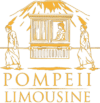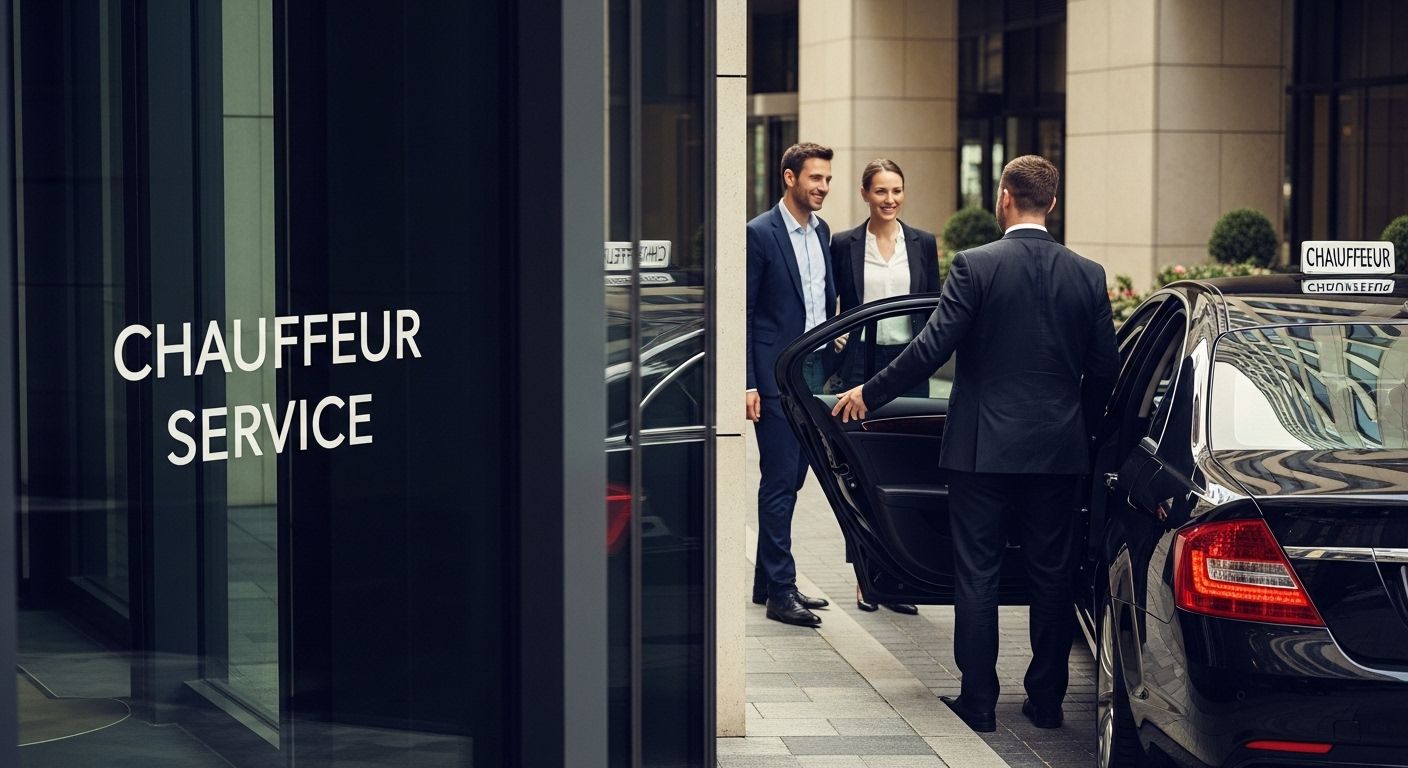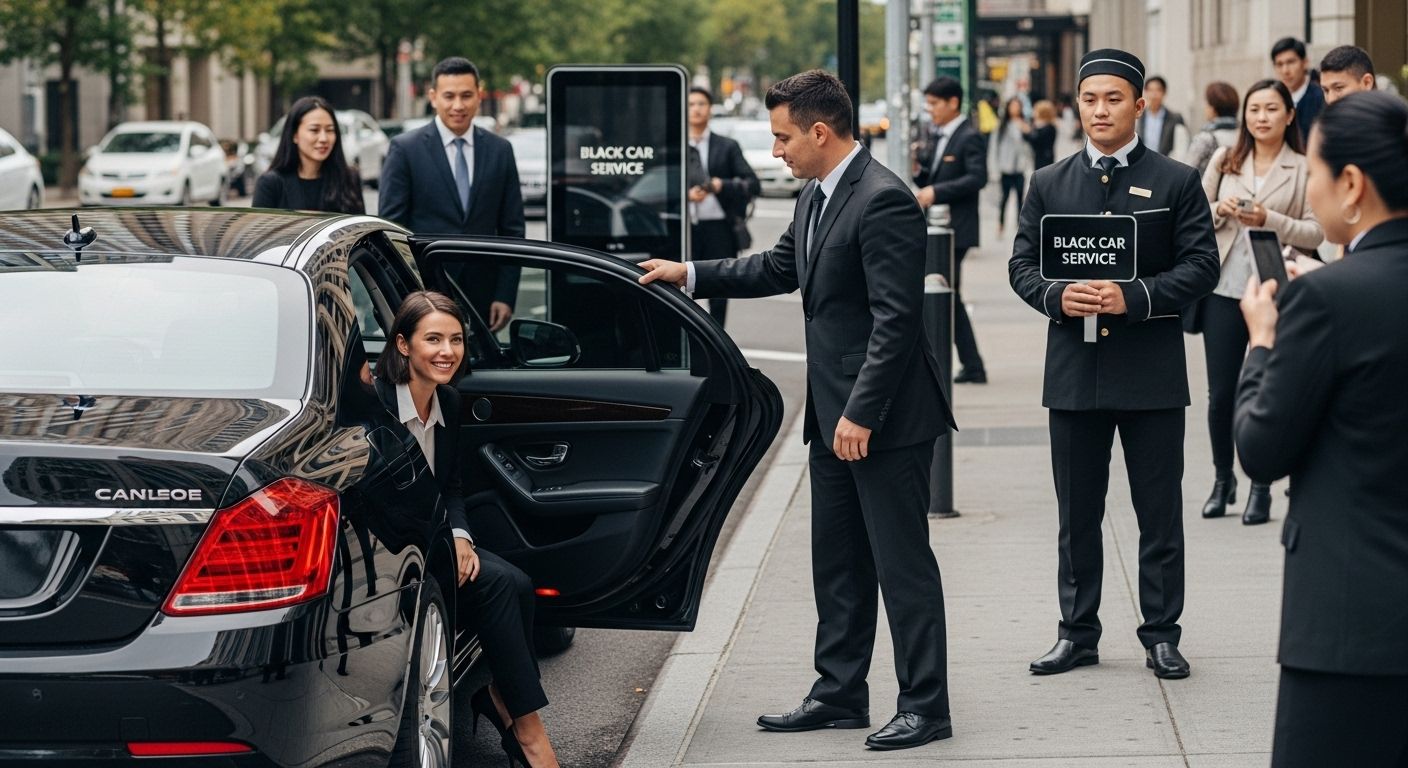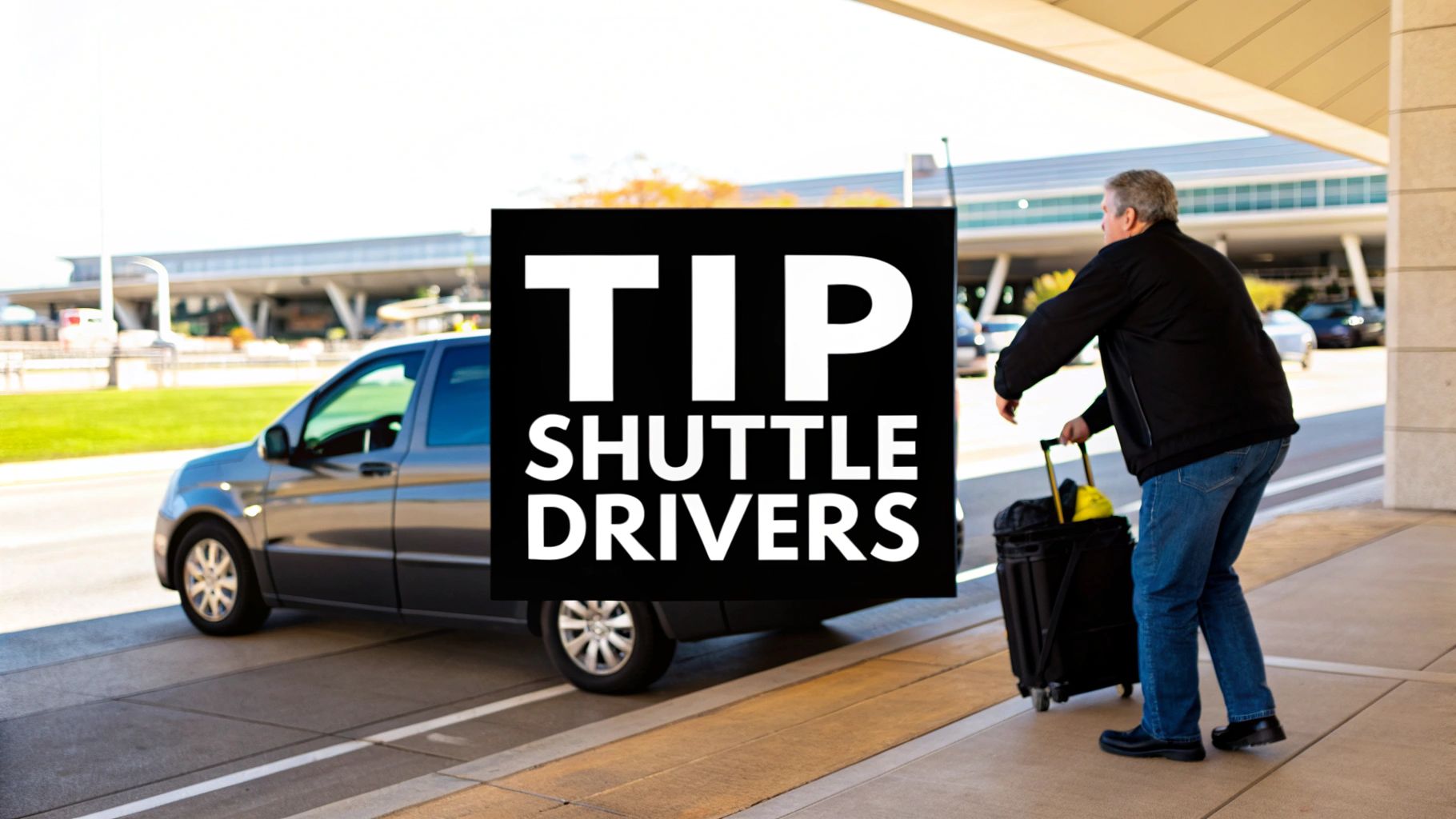Elevating Executive Journeys: The New Standard in Corporate Travel Safety
In an era of global business, ensuring the well-being of traveling employees is paramount. Beyond simple logistics, a robust corporate travel safety program protects your most valuable assets: your people. This has evolved beyond generic checklists to become a strategic function, blending risk intelligence, technology, and proactive planning. This guide moves past the obvious, offering an in-depth look at seven critical pillars that form a comprehensive safety framework.
We will explore actionable strategies tailored for discerning corporate travelers, particularly those utilizing premium ground transportation like a chauffeur service in San Diego. The focus is on implementing practical, high-level security measures that go far beyond standard travel tips. Readers will gain a clear understanding of how to build and execute a modern safety policy covering everything from pre-travel risk assessments to cybersecurity protocols.
These best practices are designed not just to meet duty of care obligations, but to create an environment where executives and team members can travel with confidence, security, and focus. By integrating these strategies, your organization can foster a culture of safety that supports productivity and protects personnel, whether they're heading to a local meeting or an international conference. This article provides the blueprint for that new standard.
1. Comprehensive Pre-Travel Risk Assessment
Effective corporate travel safety isn't about reacting to incidents; it's about proactively preventing them. The foundation of any robust safety program is a systematic evaluation of potential risks before an employee ever leaves for their destination, especially when arranging executive transport like a town car service in San Diego. This process goes far beyond a quick check of travel advisories. It involves a deep dive into the specific security, health, and operational challenges associated with a destination, route, and even the time of travel. A cornerstone of corporate travel safety is understanding how to conduct a thorough risk assessment before any journey commences. This allows your organization to make informed decisions, create detailed contingency plans, and ultimately fulfill its duty of care.
How It Works in Practice
Leading global companies integrate this process directly into their travel approval workflows. For instance, Microsoft leverages AI-powered tools to assess real-time conditions in over 190 countries, providing dynamic risk ratings that inform travel decisions. Similarly, Deloitte's travel risk management program famously saved an estimated $2.3 million in a single year by using proactive assessments to guide trip cancellations and adjustments, demonstrating a clear return on investment. The goal is to move from a reactive to a predictive safety posture.
A visual risk dashboard can distill complex data into a clear, at-a-glance summary for quick decision-making.


This snapshot immediately flags potential areas of concern, enabling travel managers to implement appropriate safeguards, such as booking a vetted chauffeur service in San Diego instead of relying on local ride-sharing apps.
Actionable Implementation Tips
- Standardize Your Approach: Create a standardized risk assessment template for all corporate travel. This ensures consistency and prevents critical factors from being overlooked, regardless of the destination.
- Establish Clear Thresholds: Define specific risk levels that automatically trigger enhanced safety protocols or travel restrictions. For example, a destination with a high crime score might mandate the use of a pre-vetted private car service for all airport transfers.
- Partner for Expertise: For travel to high-risk regions where your internal expertise may be limited, collaborate with professional security consulting firms like International SOS or Control Risks. They provide granular, on-the-ground intelligence that is vital for ensuring traveler safety.
2. 24/7 Emergency Communication and Monitoring Systems
A pre-travel risk assessment sets the stage, but true corporate travel safety relies on maintaining a constant, reliable connection with employees throughout their journey. A 24/7 emergency communication and monitoring system is the critical infrastructure that transforms a safety plan from a static document into a dynamic, real-time safety net. It’s a sophisticated combination of technology and procedure, ensuring that you can locate, communicate with, and assist traveling employees at a moment's notice, no matter where they are in the world. This system provides peace of mind, demonstrating a tangible commitment to duty of care.
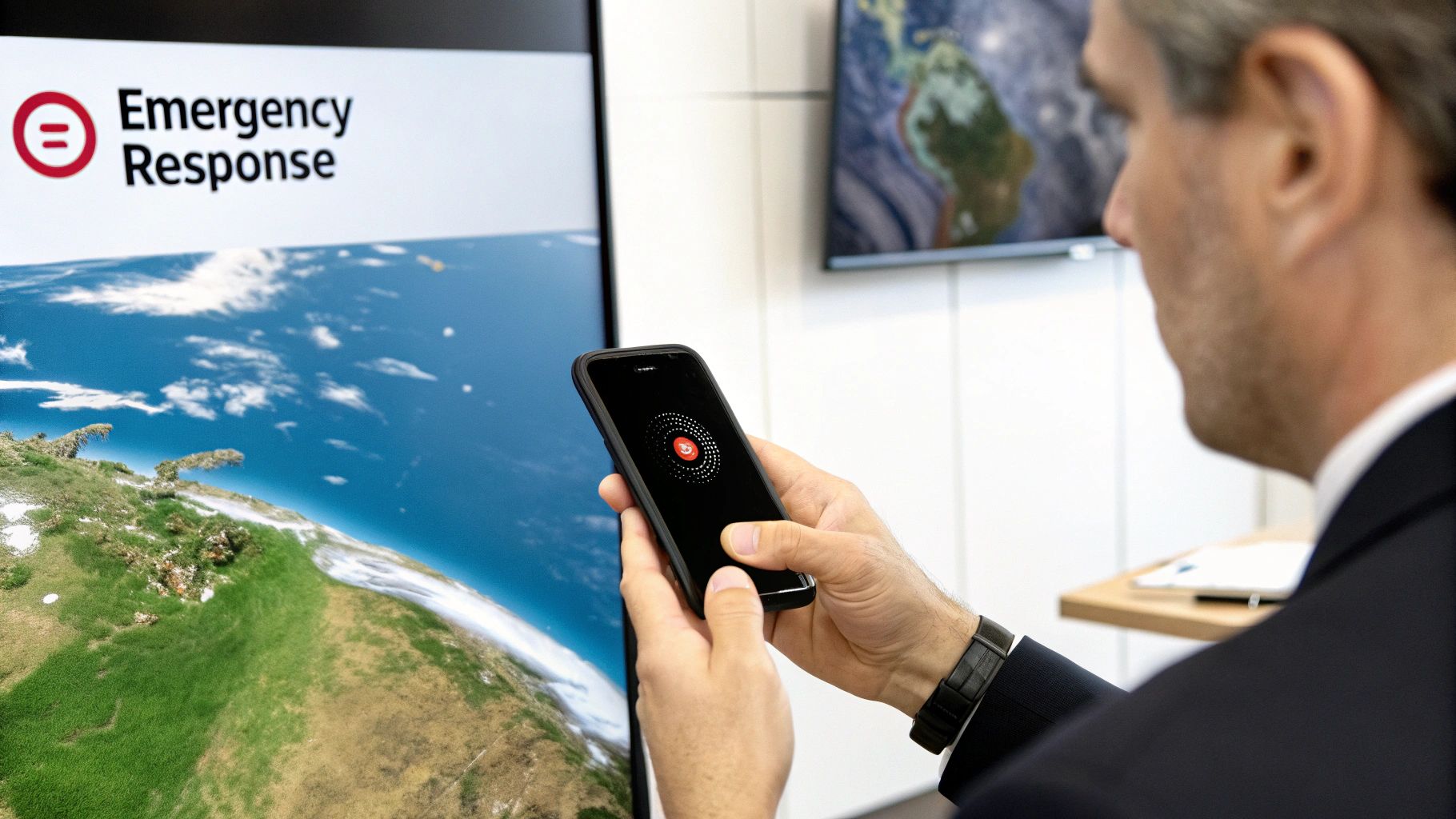

This level of connectivity is not just for high-risk regions; it's essential everywhere. A medical emergency, natural disaster, or civil unrest can happen unexpectedly, even in a city like San Diego. Knowing the precise location of your executive and having an open line of communication allows for rapid coordination, whether it's dispatching a pre-vetted chauffeur service for an emergency extraction or simply providing timely, reassuring updates.
How It Works in Practice
Top-tier organizations integrate these systems as a non-negotiable part of their travel programs. For instance, ExxonMobil's global emergency response center actively monitors over 15,000 travelers daily, using a combination of GPS tracking and automated check-in alerts. A powerful real-world example is how Accenture’s emergency communication system was instrumental in successfully coordinating the evacuation of over 200 employees from Ukraine in early 2022, showcasing the system's life-saving potential. These platforms, often popularized by firms like International SOS and Global Rescue, provide a central command center for managing traveler safety proactively.
Actionable Implementation Tips
- Provide Multiple Communication Channels: Don't rely on a single method. Equip travelers with systems that use cellular, Wi-Fi, and satellite networks. This redundancy is crucial, as a local network outage during a crisis could otherwise leave an employee stranded and out of contact.
- Establish Clear Escalation Procedures: Define and drill specific protocols for different threat levels. A missed check-in should trigger a different response than an active SOS alert. Train employees on exactly how and when to use these tools to avoid false alarms and ensure proper use in a genuine emergency.
- Conduct Regular System Tests: Don't wait for a crisis to discover a flaw in your system. Run monthly or quarterly drills with various scenarios, such as a simulated medical event or a security threat, to ensure both the technology and your response team are prepared and efficient.
3. Comprehensive Travel Insurance and Medical Coverage
Standard travel insurance often falls short of the complex needs and elevated risks associated with corporate travel. True corporate travel safety hinges on specialized insurance policies that provide extensive, business-centric coverage. This goes far beyond basic trip cancellation or lost luggage. It encompasses high-limit medical emergency coverage, security and political evacuation services, and protection for business-critical equipment. For any organization, fulfilling its duty of care means ensuring travelers are protected against worst-case scenarios, from a sudden medical crisis in a foreign country to the need for a rapid extraction during political unrest. Companies like Chubb Insurance and AIG Travel have pioneered policies tailored specifically to these corporate realities.
How It Works in Practice
Leading multinational corporations view this level of insurance not as an expense, but as a critical operational safeguard. For example, Goldman Sachs' robust travel program reportedly includes coverage for up to $5 million in medical evacuation costs per incident, ensuring an employee can be transported to a high-quality medical facility from anywhere in the world. Similarly, Chevron's comprehensive insurance was instrumental in mitigating significant losses by covering evacuation and trip interruption costs during a period of political instability in West Africa. These policies are designed to protect both the employee's well-being and the company's financial stability, covering unique risks like cyber-attacks on company devices during travel, as seen in policies adopted by firms like McKinsey.
These specialized plans integrate directly with travel risk management platforms, providing a seamless safety net for employees. When an incident occurs, a single call can activate a global network of medical and security professionals, coordinating everything from local hospital admission to secure transportation, like arranging a vetted private car service in San Diego to transport a recovering executive from the hospital.
Actionable Implementation Tips
- Scrutinize Policy Exclusions: Carefully review what is not covered. Many standard policies exclude "acts of war," terrorism, or activities in high-risk zones. Ensure your corporate policy specifically includes coverage for these eventualities if your employees travel to such destinations.
- Verify Coverage Limits: Medical costs vary drastically by country. Ensure your policy's medical coverage limits are sufficient for the most expensive destinations your employees visit. A plan adequate for Southeast Asia might be insufficient for the United States.
- Integrate with Assistance Services: Choose an insurance provider that offers 24/7 global assistance services. This is the critical link between having a policy and actually using it effectively in a crisis, providing on-the-ground support, translation, and logistical coordination.
- Document and Educate: Maintain detailed documentation of all travel-related expenses to streamline the claims process. Crucially, educate your travelers on what their policy covers and how to access assistance, providing them with a physical and digital card with emergency contact information.
4. Detailed Travel Itinerary Sharing and Approval Processes
Visibility is a cornerstone of modern corporate travel safety. Beyond basic booking, a robust system for sharing and approving detailed travel plans is essential for maintaining oversight and fulfilling your duty of care. This involves systematic procedures where employees submit comprehensive itineraries including flight numbers, accommodation details, ground transportation plans, and key meeting schedules for review. This centralized information is not just for administrative purposes; it’s a critical safety tool that enables rapid risk evaluation and allows for immediate, effective support in an emergency by providing precise location data.
How It Works in Practice
Top-tier companies integrate this process into their core operations, often using platforms like Concur Travel or American Express Global Business Travel. For example, Siemens employs a travel approval system that automatically cross-references submitted itineraries with real-time security advisories, flagging any potential conflicts for manual review. A powerful historical example is how JP Morgan's travel tracking system enabled the company to rapidly account for over 500 employees scattered across Japan during the 2011 tsunami, demonstrating the life-saving potential of this practice. The goal is to ensure no employee is ever "off the grid" and that the organization always knows where its people are and where they are headed next.
This system ensures that even granular details, like the choice between a local taxi and a pre-vetted chauffeur service in San Diego, are reviewed and aligned with company policy. It transforms the itinerary from a simple schedule into a dynamic safety document, which is a key component of a mature corporate travel safety program.
Actionable Implementation Tips
- Automate and Differentiate: Implement a system that automates approvals for routine, low-risk travel while flagging itineraries for high-risk destinations or non-standard transport requests for manual review. This optimizes efficiency without sacrificing security.
- Establish Tiered Approvals: Create different approval workflows based on destination risk level and employee seniority. A trip to a high-risk country may require director-level sign-off, whereas a domestic trip might be automatically approved.
- Mandate Real-Time Updates: Require employees to update their itineraries via a mobile-friendly platform if there are significant changes during travel, such as a last-minute flight change or an unscheduled side trip. This keeps the central system accurate and actionable.
5. Security-Focused Accommodation and Transportation Guidelines
A traveler's vulnerability doesn't end once they leave the airport. True corporate travel safety extends to every link in the journey, with accommodation and ground transport representing critical points of potential risk. Establishing comprehensive standards for selecting safe hotels and transportation providers is a non-negotiable component of a mature safety program. These guidelines move beyond simple convenience or cost, prioritizing verified security features, vetted providers like a professional chauffeur service in San Diego, and clear protocols that minimize traveler exposure to threats ranging from petty crime to targeted attacks.
How It Works in Practice
Leading multinational corporations codify these standards into their official travel policies. For instance, Coca-Cola's global accommodation standards mandate that approved hotels have 24/7 security personnel, controlled access points, and are located within a reasonable proximity to pre-screened medical facilities. Similarly, Procter & Gamble requires its preferred hotels to have backup power generation and clearly marked, multiple emergency exit routes. On the transportation front, Intel famously prohibits the use of standard ride-sharing services in over two dozen high-risk countries, instead mandating the use of vetted car services to ensure driver background checks and vehicle integrity.
Actionable Implementation Tips
- Audit and Approve: Don't just rely on hotel brand reputation. Regularly audit your company's list of approved accommodations to ensure they continue to meet your security standards. This includes physical checks or using partners like Kroll for on-site security assessments.
- Create Tiered Transportation Rules: Develop clear, risk-based guidelines for ground transportation. For low-risk domestic travel, a wider range of options might be acceptable. For international or high-risk travel, mandate the exclusive use of a pre-vetted private car service in San Diego and similar providers globally.
- Establish an Exception Process: While standards are crucial, operational realities can intervene. Create a formal process for handling exceptions when an approved hotel or car service is unavailable. This process should require management approval and trigger additional risk mitigation steps.
6. Cultural Awareness and Local Law Training Programs
True corporate travel safety extends beyond physical security to encompass cultural and legal situational awareness. A seemingly minor cultural faux pas or an unintentional violation of a local law can quickly escalate, jeopardizing a traveler's safety, derailing a business objective, and damaging the company's reputation. Proactive training programs that educate employees on cultural norms, business etiquette, and local legal requirements are a critical, often overlooked, layer of risk mitigation. These programs transform employees from tourists into informed, respectful visitors, significantly reducing the likelihood of misunderstandings and preventable incidents. For an in-depth understanding of cross-cultural business dynamics, resources like Country Navigator provide invaluable, destination-specific insights that can be integrated into your safety protocols.
How It Works in Practice
Leading multinational corporations embed this training as a mandatory step in their international travel protocols. For example, Samsung's targeted cultural training program famously reduced business etiquette missteps by 75% in key Middle Eastern markets, directly improving negotiation outcomes. Similarly, Unilever's mandatory legal compliance training for employees traveling to China was credited with preventing potential regulatory violations that could have cost the company upwards of $2 million. The objective is to equip employees, whether they are executives using a private car service in San Diego for a meeting or engineers on a long-term assignment, with the knowledge to navigate new environments confidently and safely.
Actionable Implementation Tips
- Prioritize High-Contrast Regions: Focus initial training efforts on destinations where cultural and legal norms differ most significantly from your home country. This ensures resources are directed where the risk of misunderstandings is highest.
- Create Quick-Reference Guides: Supplement formal training with pocket-sized, digital, or laminated guides. These should cover essential information like common greetings, tipping etiquette, emergency contact numbers, and critical local laws (e.g., regulations on photography or alcohol consumption).
- Use Scenario-Based Learning: Move beyond simple fact sheets. Develop training modules that use real-world case studies and interactive scenarios. This helps employees practice navigating sensitive situations, from gift-giving protocols to interacting with local authorities.
- Offer Refresher Courses: For frequent travelers to a specific region, implement brief, periodic refresher training. This reinforces key learnings and provides updates on any changes in the local social or legal landscape, ensuring their corporate travel safety knowledge remains current.
7. Cybersecurity and Data Protection Protocols
In today's digital world, physical safety is only one part of the corporate travel safety equation. A traveler’s devices, data, and communications are high-value targets for theft, espionage, and surveillance. Robust cybersecurity and data protection protocols are non-negotiable security measures designed to shield company assets from the unique digital risks encountered on the road. This involves safeguarding against unsecured Wi-Fi networks, device theft or seizure at borders, and sophisticated state-sponsored surveillance in certain regions. Effective protocols ensure that a stolen laptop doesn't lead to a multi-million dollar data breach.
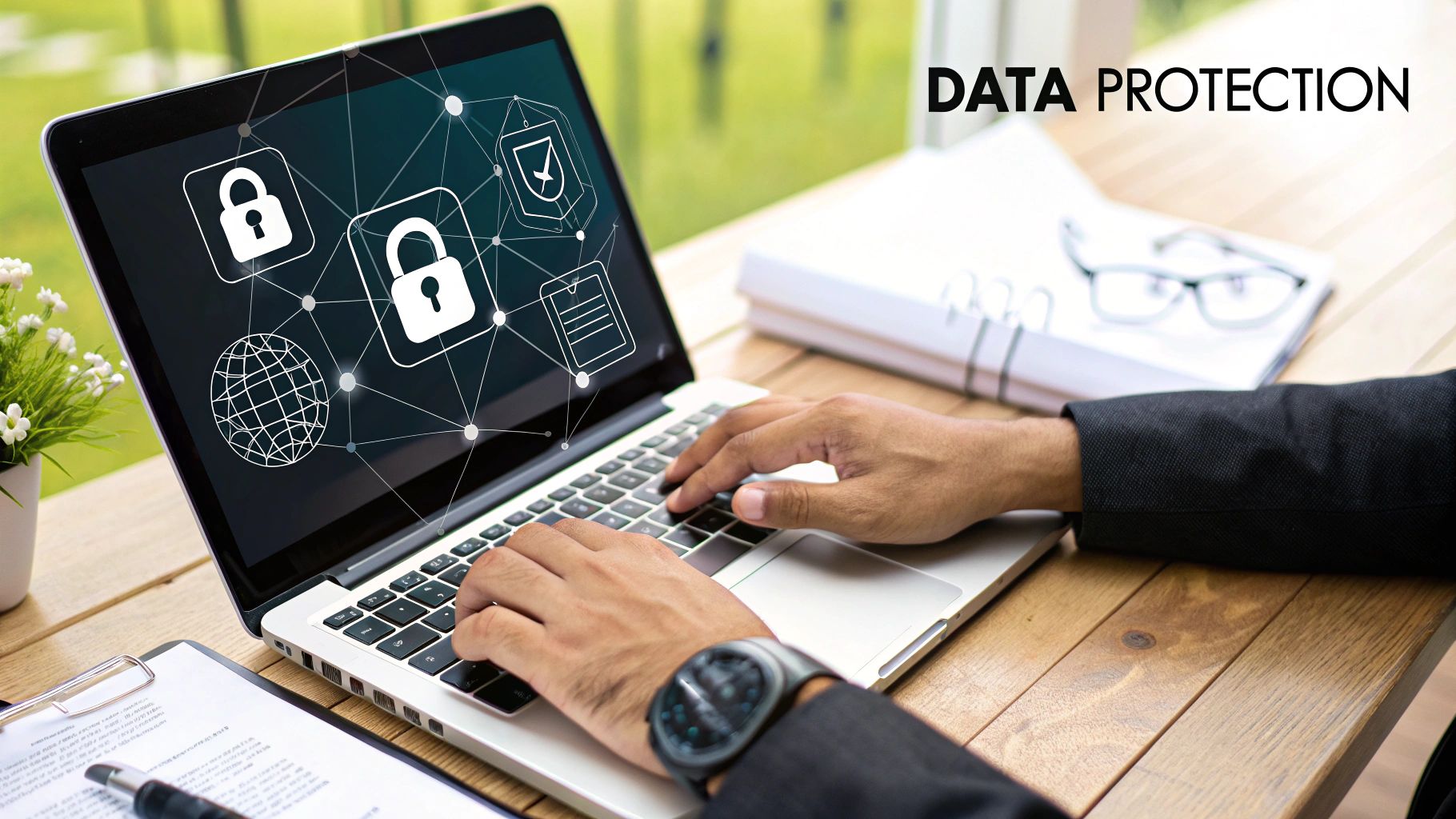

How It Works in Practice
Leading tech and security-conscious companies, popularized by firms like CrowdStrike and FireEye, treat digital travel security with the same seriousness as physical security. For instance, Google's renowned travel program often provides employees traveling to high-risk countries with "burner" devices, which are scrubbed clean of sensitive data and can be disposed of after the trip. Similarly, Amazon's data protection protocols have reportedly thwarted industrial espionage attempts, safeguarding intellectual property and competitive advantages. These measures aren't just for tech giants; they are scalable best practices for any company serious about protecting its information.
Actionable Implementation Tips
- Provide 'Clean' Devices: For travel to high-risk destinations, issue employees loaner laptops and phones containing only the essential data and applications needed for the trip. This minimizes the potential damage if a device is compromised or seized.
- Mandate Pre-Travel Training: Equip travelers with the knowledge to recognize and avoid common cyber threats like phishing scams tailored to travelers, "evil twin" Wi-Fi hotspots in airports, and USB charging port hacks. For comprehensive strategies on protecting sensitive corporate data, especially when sharing travel itineraries or personal information, consider best practices for secure online file transfer.
- Establish Clear Device Handling Protocols: Create a clear, step-by-step policy for what employees should do if their device is requested for inspection at a border crossing. This includes who to contact immediately and understanding their rights and obligations, which vary significantly by country.
- Implement Data Management Cycles: Enforce mandatory, encrypted backups of all devices before departure and have a secure, documented process for wiping the travel devices clean upon the employee's return to the home office.
7-Point Corporate Travel Safety Comparison
| Item | Implementation Complexity 🔄 | Resource Requirements ⚡ | Expected Outcomes 📊 | Ideal Use Cases 💡 | Key Advantages ⭐ |
|---|---|---|---|---|---|
| Comprehensive Pre-Travel Risk Assessment | Medium to High 🔄 | High: real-time intel, integration, analysis ⚡ | Proactive risk mitigation, informed travel decisions 📊 | High-risk destinations, frequent travel monitoring | Reduces insurance costs, improves employee confidence ⭐ |
| 24/7 Emergency Communication & Monitoring | High 🔄 | High: tech infrastructure, satellite backup ⚡ | Immediate emergency response, rapid incident handling 📊 | Continuous traveler safety, emergency preparedness | Reduces response times to minutes, peace of mind ⭐ |
| Comprehensive Travel Insurance & Medical | Medium 🔄 | Medium-High: policy management, premiums ⚡ | Financial protection, medical evacuation support 📊 | Business travelers in high-risk or remote areas | Covers specialized risks, lowers liability ⭐ |
| Detailed Travel Itinerary Sharing & Approval | Medium 🔄 | Medium: administrative overhead, system integration ⚡ | Better compliance, proactive risk management 📊 | Ensuring oversight, emergency readiness | Improves travel spend control, essential info for emergencies ⭐ |
| Security-Focused Accommodation & Transport | Medium 🔄 | Medium: vendor vetting, continuous audits ⚡ | Reduced security exposure, consistent safety standards 📊 | Travel to threat-prone areas, minimizing security threats | Simplifies booking, enables better emergency response ⭐ |
| Cultural Awareness & Local Law Training | Low to Medium 🔄 | Low-Medium: training time and materials ⚡ | Prevents legal/cultural issues, improves business rapport 📊 | Travel to culturally diverse or legally complex regions | Enhances traveler confidence, reduces incidents ⭐ |
| Cybersecurity and Data Protection Protocols | Medium to High 🔄 | Medium-High: specialized equipment, training ⚡ | Protects data, reduces espionage risk 📊 | Travel to countries with high cyber or surveillance risks | Maintains secure communications, enables remote data recovery ⭐ |
Integrating Safety into Your Corporate Travel DNA
Navigating the complexities of modern business travel requires more than just booking flights and hotels; it demands a proactive, deeply integrated approach to corporate travel safety. As we've explored, creating a secure environment for your traveling employees is not about a single checklist but about weaving a resilient fabric of preparedness into your company's very culture. This moves your duty of care from a passive legal obligation to a powerful strategic asset.
The seven pillars discussed in this article, from meticulous pre-travel risk assessments to robust cybersecurity protocols, form the blueprint for this transformation. They work in concert to create a system where safety is a shared, constant priority. You are not just sending an employee to a meeting; you are deploying a valued team member with a comprehensive support network behind them. This proactive stance is what separates leading organizations from the rest. It builds profound trust with your team, demonstrating that their well-being is a non-negotiable priority.
Key Takeaways for a Stronger Safety Culture
To truly elevate your safety standards, focus on these critical action points:
- Proactivity Over Reactivity: Don't wait for an incident to happen. Use detailed itinerary sharing, security-focused accommodation choices, and comprehensive insurance to mitigate risks before they materialize.
- Knowledge is Power: Empower your travelers with essential cultural awareness training and clear guidance on local laws. An informed traveler is a safer, more confident traveler.
- Technology as an Ally: Leverage 24/7 communication systems and data protection protocols not just as tools, but as foundational elements of your safety framework.
Your Actionable Next Steps
Mastering corporate travel safety is an ongoing process of refinement and commitment. Begin by auditing your current travel policies against the seven core areas we've covered. Identify the gaps and create a clear roadmap for implementation. This isn't just an administrative task; it's a cultural shift. To truly embed safety into your corporate culture, understanding effective workplace safety procedures is paramount, as the principles of a safe office extend directly to your team members on the move.
Ultimately, a robust travel safety program yields significant returns. It enhances employee morale and retention, protects your company's reputation, and ensures business continuity, no matter where your operations take you. When your team feels secure, they are free to focus on innovation, collaboration, and driving your business forward. This commitment to safety becomes your competitive advantage, signaling to employees and clients alike that you are an organization that operates with integrity and foresight.
For companies operating in Southern California, solidifying your ground transportation is a crucial final piece of this safety puzzle. Partnering with a premier provider like Pompeii Limousine ensures every airport transfer and client meeting is handled with the highest standards of safety and professionalism. Their commitment to vetted chauffeurs and pristine vehicles aligns perfectly with a comprehensive corporate travel safety strategy, providing peace of mind from curb to curb.
